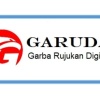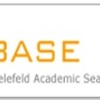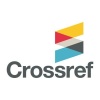Ananlisis kemampuan komunikasi matematis ditinjau dari self-efficacy siswa
Abstract
Mathematical communication ability is an essential part of mathematic and mathematic education. This mathematical communication is useful for students to turn an idea into an object of thought. Beside that, one of the psychological or affective aspects is self-efficacy. The purpose of this study was to describe the extent to which a person's self-efficacy can determine students' mathematical communication ability, especially in junior high school. This research was conducted in the odd semester of the 2020/2021 school year at SMP Negeri 1 Cilegon.The research subjects in this study were 20 students of class VIII E based on the high, medium and low self-efficacy categories for conducting tests and interviews.
Full Text:
PDFReferences
Arifin, P., Trisna, B. N., & Atsnan, M. F. (2018). Mengembangkan self-efficacy matematika melalui pembelajaran pendekatan matematika realistik pada siswa kelas VII D SMP Negeri 27 Banjarmasin tahun pelajaran 2016-2017. Math Didactic: Jurnal Pendidikan Matematika. https://doi.org/10.33654/math.v3i2.59
Bandura, Albert. (1982). Self-efficacy mechanism in human agency. American Psychologist. https://doi.org/10.1037/0003-066X.37.2.122
Capraro, R. M., Capraro, M. M., & Rupley, W. H. (2012). Reading-enhanced word problem solving: A theoretical model. European Journal of Psychology of Education. https://doi.org/10.1007/s10212-011-0068-3
Jatisunda, M. G. (2017). Hubungan Self-Efficacy Siswa SMP dengan Kemampuan Pemecahan Masalah Matematis. Jurnal THEOREMS (The Original Research of Mathematics).
Miles, M. B., & Huberman, M. A. (2012). Analisis Data Kualitatif: Buku Sumber Tentang Metode-Metode Baru. In Universitas Indonesia_UI Press.
NCTM. (2000). Principles and Standards for School Mathematics Overview. Journal of Equine Veterinary Science.
Sugiyono. (2013). Metode Penelitian Pendidikan Pendekatan Kuantitaif, Kualitatif, dan R&DSugiyono. 2013. “Metode Penelitian Pendidikan Pendekatan Kuantitaif, Kualitatif, dan R&D.” Metode Penelitian Pendidikan Pendekatan Kuantitaif, Kualitatif, dan R&D. https://doi.org/10.1. In Metode Penelitian Pendidikan Pendekatan Kuantitaif, Kualitatif, dan R&D.
Sumarmo, U. (2014). Berpikir Dan Disposisi Matematika Serta Pembelajarannya. Kumpulan Makalah Pendidikan Matematika FPMIPA UPI Bandung. https://doi.org/10.1109/SECPRI.2000.848445
DOI: http://dx.doi.org/10.48181/tirtamath.v5i1.14055
Refbacks
- There are currently no refbacks.
Copyright (c) 2023 TIRTAMATH: Jurnal Penelitian dan Pengajaran Matematika
Ciptaan disebarluaskan di bawah Lisensi Creative Commons Atribusi 4.0 Internasional .
Tirtamath: Jurnal Penelitian dan Pengajaran Matematika. Jurnal ini diterbitkan oleh Program Studi Magister Pendidikan Matematika Universitas Sultan Ageng Tirtayasa (cetak) dan Jurnal Untirta (eprint).
Alamat Penerbit: Program Studi Magister Pendidikan Matematika Kampus FKIP Untirta Jl. Ciwaru Raya, Cipare, Kec. Serang, Kota Serang, Banten 42117, Email: [email protected] |Klik untuk mengakses: Tirtamath: Jurnal Penelitian dan Pengajaran Matematika






